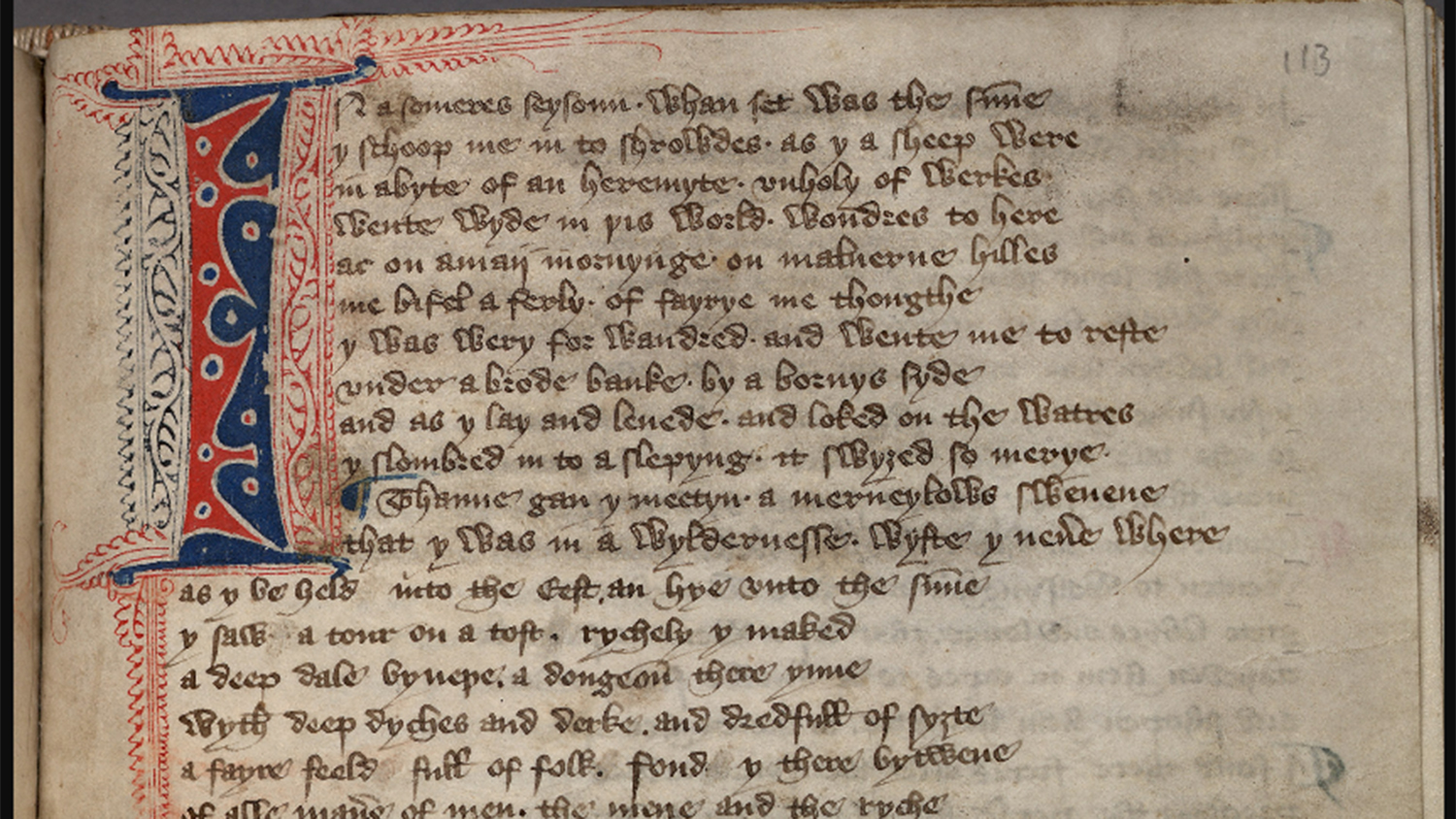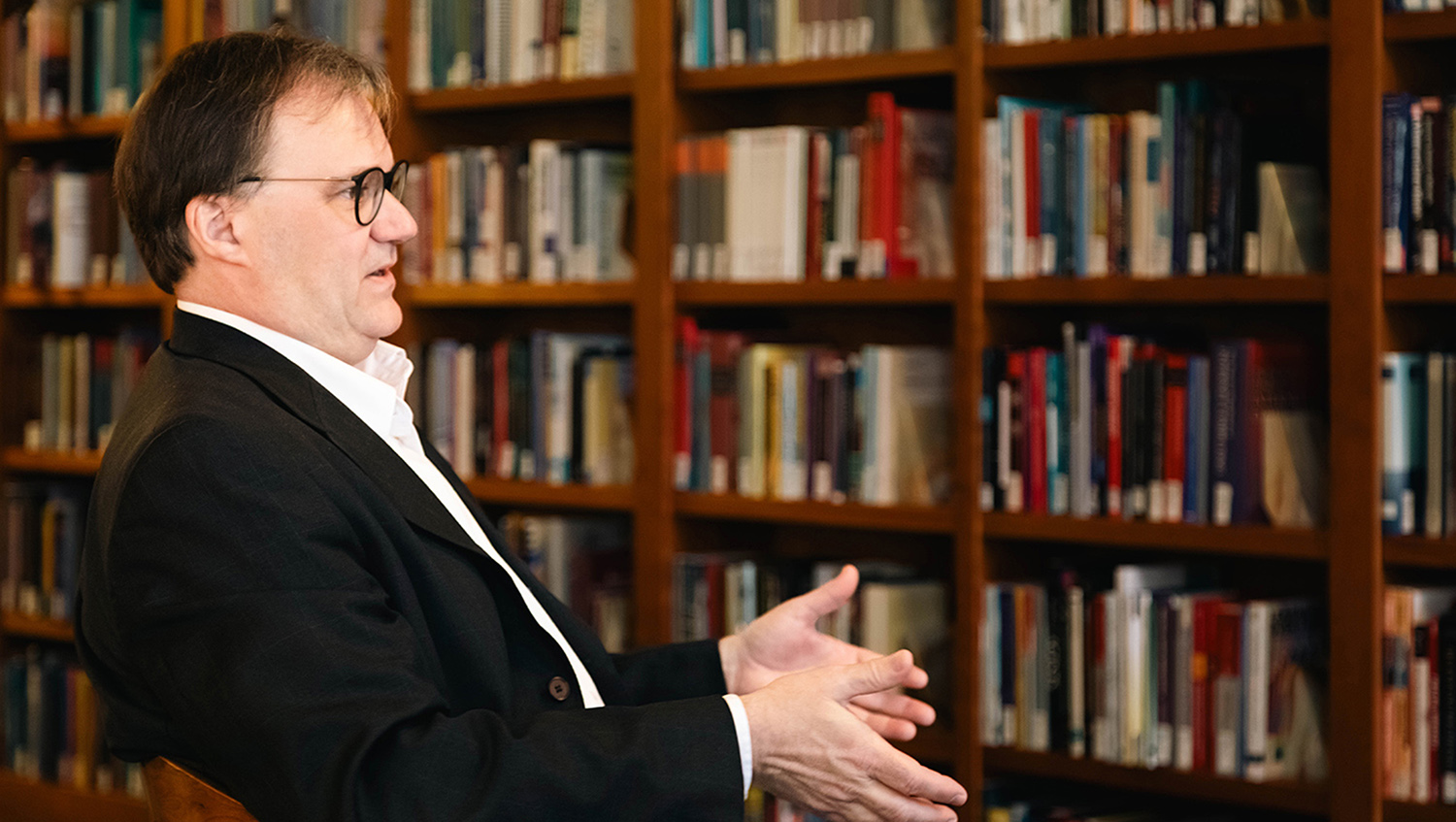Bringing Medieval Literature Into the Digital Age

William Langland likely wouldn’t know what to make of the latest way people are reading his poetry. In part, that’s because Langland died in 1386. But it’s also because his most famous work, Piers Plowman, is the subject of an expansive digital humanities project – allowing scholars to work with multiple versions of the poem using modern tools.
Several researchers from NC State, in collaboration with medieval literature scholars from several other institutions, helped bring a new edition of Langland’s work to the public last year.
To learn more about how digital tools are breathing new life into a poem that is more than 600 years old, we reached out to Tim Stinson, an associate professor of English at NC State and co-director of the Piers Plowman Electronic Archive.
The Abstract: First off, what is Piers Plowman? Who wrote it, and why is it an important piece of literature?
Tim Stinson: Piers Plowman was written late in the 14th century by William Langland, a man about whom we know little else. It is inarguably one of the most important works of English literature from the medieval era. Of its time, only Chaucer’s work has had a greater impact on later literature and thought.
To judge from the numbers of surviving manuscripts of Piers Plowman and The Canterbury Tales, it is likely that both Langland and Chaucer were equally popular in their own day, and Langland’s work enjoyed a substantial and influential afterlife. It was frequently recopied in the 15th century and printed in four editions during the 16th century. At that time, one might say that Piers Plowman was rebaptized as a proto-Protestant poem. Reformers believed that the poem’s arguments anticipated, and perhaps even hastened, the advent of the Reformation in England. The poem was known and loved by authors such as Spenser, Milton and John Bunyan. One of the poem’s most prominent editors and interpreters, E. Talbot Donaldson, has said that Piers Plowman’s “extraordinary sweep and intensity … make it one of the greatest religious allegorical poems in English, rivaled only by Spenser’s Faerie Queene.”
TA: People refer to an “A version” of Piers Plowman, and a “B version.” What’s the distinction?
Stinson: Langland seems never to have settled on a final version of the poem, and spent a couple of decades rewriting it. It survives in three identifiable versions, which today we call the A, B, and C versions, which reflects the chronological order in which we believe the revisions to have been written.
TA: Earlier this year, the University of North Carolina Press published Piers Plowman: The B-Version Archetype (Bx). What is an “archetype” in this context? And what does “Bx” mean? Basically, what sets this edition apart?
Stinson: As with almost all medieval texts, we have no manuscript copies in the author’s original hand. And as is typical with literary manuscripts of the time (before the invention of printing), the poem underwent many changes, both accidental and intentional, as copies were made from copies down through the years. We refer to an “archetype” in this context as the no-longer extant manuscript from which all other copies of the B-version of Piers Plowman descended. “Bx” is just a shorthand way of referring to the B-version archetype. It is customary to assign one- or two-letter identifiers, called “sigils,” to manuscripts when editing them. So “Bx” is a sort of shorthand that follows that tradition.
Most editions seek to use evidence from the manuscript tradition to recreate a text that best approximates what the author intended, as if we were uncovering the original text in his or her hand. Such evidence is often murky at best, however, as is the case here.
This edition differs in that it seeks to recreate the archetype – that manuscript copy at some remove from Langland’s original, perhaps, but the immediate predecessor of what does survive today – rather than the author’s original, which the editors demonstrate to be a more realistic goal. It also differs in that it is first major critical edition of the poem to be designed for digital publication (see http://piers.chass.ncsu.edu/texts/Bx). It is linked to documentary editions of individual manuscripts and features advanced tools for navigating the poem. The printed edition from UNC Press is derived from the digital text, which also sets this edition apart – it is a fluid, multifaceted edition, offering a number of different ways of reading, interacting with, and studying one poem.
TA: The publication was edited by John Burrow and Thorlac Turville-Petre, emeritus professors at the University of Bristol and the University of Nottingham, respectively. What was your involvement in bringing this edition to life?
Stinson: I serve, along with Thorlac Turville-Petre and Hoyt Duggan, emeritus professor at the University of Virginia, as the co-director of the Piers Plowman Electronic Archive. The edition itself was finished and published online by the PPEA before I took on this position. My main role was in applying for a grant from the UNC Press to produce a printed version of the edition.
TA: You, working with Jim Knowles and Paul Broyles, used LaTeX when working on this edition. What exactly does that entail? And is this something that could be used to address other medieval texts?
Stinson: LaTeX is a typesetting system that allows you to prepare what would have been called camera-ready copy in previous years – i.e., a finished file ready for the publisher to print. In our case, we needed to convert the underlying XML files from our digital edition to something that would look good as a book. At the time, Paul Broyles was working on the project as part of his CLIR Postdoctoral Fellowship in Data Curation for Medieval Studies, which funded two years of his work here at NC State. None of us knew LaTeX, and Paul stepped up and learned it from scratch. Jim Knowles serves as managing editor of PPEA and is also a medievalist in the English department here at NC State. He has a background in publishing, and was able to work with Paul to make sure the final layout was ready for print and looked as good as possible.
TA: In looking at this archetypal edition, is there anything that jumps out at you? Surprises or insights that came to light as a result of the work?
Stinson: What strikes me the most is that this represents a new way of interacting with medieval textual traditions. What editors find when they begin work of this sort is often a messy set of unclear, and at times contradictory, evidence regarding what the “correct” reading of a text should be.
Piers Plowman has been called the Mount Everest of Middle English textual criticism because it is such a difficult text to edit. It is a long poem that survives in three versions. There are a lot of manuscript copies that have complex relationships to one another – copies of copies of copies, each altering its predecessor. There are even manuscript copies that are the result of scribes splicing together copies of the poem from the three different versions that Langland wrote. Previous printed editions performed a great service to scholars and readers by offering a text of the poem that provided a coherent reading copy and resolved some of the many problems posed by the manuscript tradition. But of course this approach also removes much of the history of the poem and its versions from sight.
Burrow and Turville-Petre’s edition of Bx not only offers a new model for editing the B version of the poem, but is revolutionary in that it embeds the text in the context of the larger Piers Plowman Electronic Archive. Users can move from the critical edition to editions or images of individual manuscript copies, and they can cross-search all of this material. This is a new way of approaching texts that puts more power into the hands of users. If you just want to trust the editors’ opinions and have a reading copy, then that is available. But there is much, much more if you want to dig deeper.
TA: Are there any texts that you are already considering for similar treatment?
Stinson: Right now our hands are full with Piers Plowman. But certainly other medieval texts with large manuscript traditions, such as The Canterbury Tales, or with complex transmission histories, are all candidates. And indeed our publishing platform is available as open-source software and is useful even for simpler projects, such as publishing an edition of a single manuscript. I have been working on another 14th-century poem, The Siege of Jerusalem, for a similar edition, which is viewable at siegeofjerusalem.org. Thus far I have focused on editing the underlying documentary texts, but in the future I would like to create a critical version of the text linked to that documentary evidence.
This post was originally published in NC State News.
- Categories:


